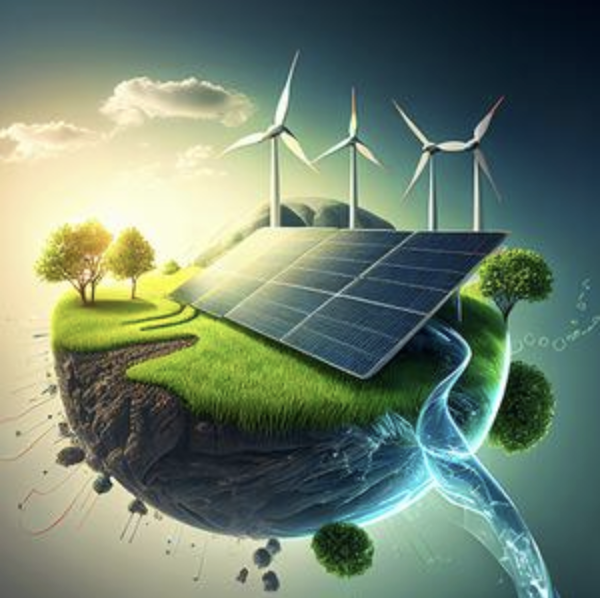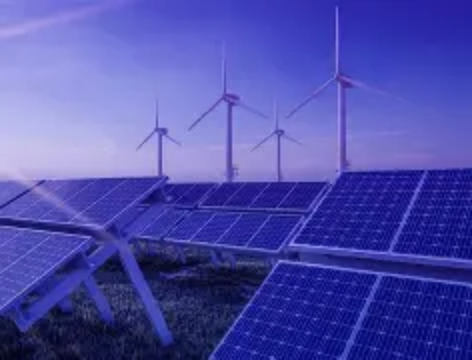Green Tech: Tech Elites' Next Frontier
Affluent individuals are now seeking more than just carbon offsetting; they aspire to achieve carbon negativity as a new status symbol. Innovative startups are stepping in to meet this need with technologies that not only cut emissions but also actively extract carbon from the air. One example is luxury building materials made with biochar, which contain compounds designed to capture carbon. A mansion in Beverly Hills utilizing these materials could boast that it removes more CO2 from the environment than what its occupants produce, thereby transforming sustainability into a valuable selling point.

Another area of interest is precision carbon tracking tailored for extremely wealthy portfolios. Conventional ESG metrics do not provide enough detail for this group; they require immediate, precise data on the carbon footprints tied to each investment. Companies like CarbonVue provide blockchain-enabled sensors that monitor emissions from private jets, yachts, and even art collections, giving valuable insights to help reduce waste. For those in the tech industry, this is more than just regulatory adherence; it’s about having exclusive data that demonstrates their impact on the health of the planet.
The Infrastructure Play: Private Green Grids
As governments discuss renewable energy projects for the public, wealthy tech entrepreneurs are setting up private microgrids that blend luxury with reliability. Unlike typical solar installations, these systems use cutting-edge vanadium flow batteries that can supply power to a mansion for several weeks and implement AI to manage energy usage, ensuring that power goes first to things like a superyacht charger or a home laboratory. In Silicon Valley, many tech leaders are linking their properties through underground green energy networks, forming small power systems that function separately from the often unreliable public grid.
This movement isn't limited to homes. Venture capital firms, supported by tech insiders, are pouring money into desalination 2.0—solar-driven water treatment facilities that turn seawater into drinkable water without emissions, while also selling any extra water to local authorities. These initiatives provide consistent profits while addressing issues of resource availability, attracting investors interested in benefiting financially and leaving a meaningful legacy.

The Risks: When Green Hype Meets Reality
Not every green technology project fulfills its promises, and wealthy investors face even greater risks. Startups in the carbon capture sector, often over-promoted, frequently struggle to move beyond their initial testing stages, consuming millions in investment before revealing that their technologies cannot deliver as claimed. A notable case involved a startup supported by major tech personalities that failed after its so-called "revolutionary" direct air capture technique turned out to be ten times less effective than it was presented.
Changes in regulations can introduce additional unseen dangers. High-end electric vehicles (EVs) tailored for wealthy customers may soon need to comply with stricter rules about battery material sourcing, as governments take action against conflict minerals. A single regulatory shift could make an entire $2 million collection of EVs non-compliant, underlining the importance of thorough research beyond just engaging marketing.
Why Tech Elites Can’t Afford to Sit Out
For this group, investing in green technology is more than just a financial opportunity; it has become an essential strategy. As climate-driven disasters lead to disruptions in supply chains and diminish the value of conventional assets, having green infrastructure acts like a safety net. A private island equipped with its own sustainable energy and water sources is not merely a luxury getaway; it serves as a safeguard against potential chaos in society.

Additionally, advancements in green tech present a new platform for tech leaders to demonstrate their abilities in solving critical issues. Just as they thrived during the digital age, they are now vying to secure patents for innovations in fusion energy, sustainable construction materials, and AI-driven ecological restoration. These endeavors extend beyond simple business ventures; they aim to establish their legacy as key figures in the healing of our planet.In this competitive environment, those who succeed will not only gain wealth but also shape the trajectory of sustainability. For the technology elite, embracing green tech is no longer a choice; it is the sole boundary they seek to explore.
(Writer:Lily)





